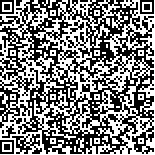本文已被:浏览 1199次 下载 409次
投稿时间:2023-05-10 网络发布日期:2023-10-20
投稿时间:2023-05-10 网络发布日期:2023-10-20
中文摘要: 缺血性心脏病(IHD)是全球冠心病患者死亡的主要原因之一,早期治疗可以恢复缺血性心肌的血液供应,并降低死亡风险。然而,当中断心肌血液供应并在一定时间内恢复时,会对原缺血性心肌造成严重损害,即心肌缺血再灌注损伤(MIRI)。导致MIRI的病理生理机制与氧化应激、钙超载、炎症、能量代谢障碍和铁死亡等有关。目前临床主要通过动脉搭桥、溶栓治疗和经皮冠状动脉血管成形术等方式治疗,但药物缓解在疾病进展中越来越重要。因此,本文根据目前MIRI的病理生理机制,阐述相关信号通路以及相关药物治疗的研究进展,以期为MIRI的机制研究与新药研发提供新思路。
Abstract:Ischemic heart disease (IHD) is one of the main causes of death in patients with coronary heart disease worldwide. Early treatment can restore blood supply to ischemic myocardium and reduce the risk of death. However, when the blood supply to the myocardium is interrupted and restored within a certain period of time, it can cause serious damage to the original ischemic myocardium, namely myocardial ischemia-reperfusion injury (MIRI). The pathological and physiological mechanisms leading to MIRI are related to oxidative stress, calcium overload, inflammation, energy metabolism disorders, and ferroptosis. At present, clinical treatment mainly involves arterial bypass grafting, thrombolytic therapy, and percutaneous coronary angioplasty, but drug relief is becoming increasingly important in disease progression. Therefore, based on the current pathological and physiological mechanisms of MIRI, this article elaborates on the progress of the relevant signaling pathways and drug therapy research, in order to provide new ideas for the mechanism research and new drug development of MIRI.
keywords: Myocardial ischemia-reperfusion injury Pathophysiological mechanisms Signal pathway Drug research
文章编号: 中图分类号:R543.3 文献标志码:A
基金项目:内蒙古自治区卫生健康科技计划项目(20214152);内蒙古医科大学联合项目(YKD2022LH041);2022年青年岐黄学者培养项目(KJ000406);内蒙古自治区中医药(蒙医药)中青年领军人才项目(CZ000304);“草原英才”项目(CZ000246)
附件
| Author Name | Affiliation |
| ZHENG Lirong*, BAO Aruhan, ZHANG Ruifen, ZHANG Hairong, CUI Hongwei, LYU Jianye, SU He | *Inner Mongolia Medical University, Hohhot, Inner Mongolia 010010, China |
引用文本:
郑力榕,包阿如汗,张瑞芬,等.心肌缺血再灌注损伤机制及药物治疗研究进展[J].中国临床研究,2023,36(10):1580-1584,1588.
郑力榕,包阿如汗,张瑞芬,等.心肌缺血再灌注损伤机制及药物治疗研究进展[J].中国临床研究,2023,36(10):1580-1584,1588.
